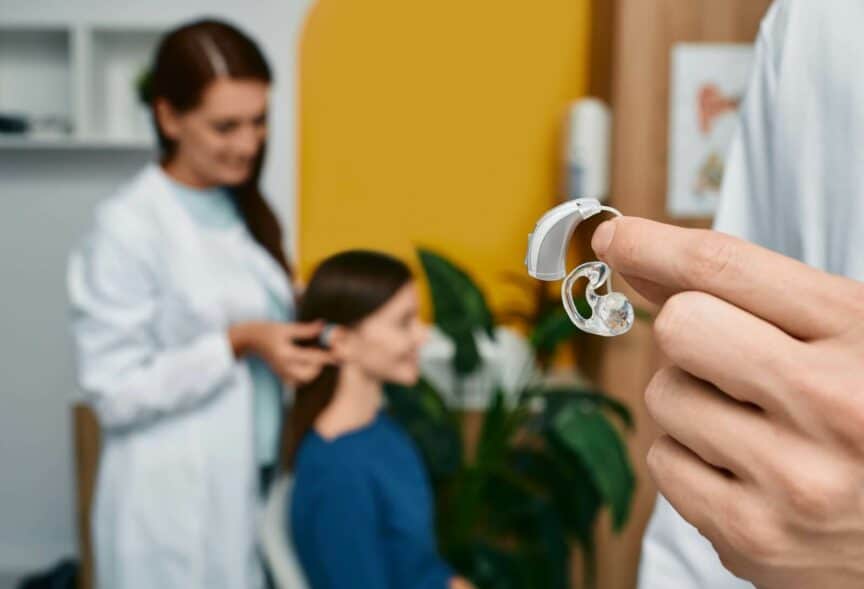Did you know that close to 2.5 billion people are predicted to have some kind of hearing disorder by 2050? Or that hearing disorders are among the most common sensory processing disorders, affecting more than 1 in 10 Americans. Though people of all ages can have hearing loss disorders, those between 60 and 70 years old are more likely to be affected.
If you deal with partial hearing loss, it can be difficult to follow or participate in conversations, affecting your ability to carry out daily tasks and enjoy life. Hearing loss should not be confused with deafness. A deaf person can hear almost nothing and cannot participate in conversations. In contrast, people with hearing loss disorders can still hear partially and can improve their hearing ability with the help of hearing aids.
Keep reading to understand more about hearing loss and hearing aids.
Types of Hearing Loss
There are three major types of hearing loss, classified based on the underlying causes.
Sensorineural Hearing Loss
This is the most common hearing loss disorder where the inner ear or the hearing nerve is damaged. It happens when some of the hair cells within the cochlea are damaged.
Aging, exposure to loud noise, injuries, diseases, certain medications, or even a genetic condition are a few reasons that can cause this type of hearing loss. This type of hearing loss is not treatable with medical or surgical procedures, though many individuals have reported positive benefits from using hearing aids.
Conductive Hearing Loss
For people with conductive hearing loss, sounds cannot travel from the outer ear to the middle or inner ear. Hearing soft and muffled sounds becomes difficult. However, this hearing loss is treatable medically or surgically and is not always permanent. It is common in children with recurring ear infections or who put foreign objects into their ears.
Mixed Hearing Loss
Sometimes, people can develop both sensorineural and conductive hearing loss. In this case, both the main hearing nerve, or inner ear, and the outer, or middle, ear may be affected.
Getting your ears tested by healthcare professionals like audiologists, otolaryngologists, or hearing aid specialists will help with a proper diagnosis and determine the right treatment for you. In many cases, the audiologist will prescribe you a hearing aid.
How Do Hearing Aids Work?
Hearing aids are small electronic devices that run on a rechargeable battery. It receives sounds from the outside environment, processes, analyzes, amplifies them, and sends them to the inner ear after making the necessary adjustments based on your hearing abilities and the environment around you.
Although they cannot restore normal hearing, hearing aids can help you hear better by amplifying sounds, and they are mainly used to treat sensorineural hearing loss.
Hearing aids come in a variety of shapes, sizes, and designs. These variations are primarily found in their size, positioning, and level of amplification. Here are the three most common types of hearing aids:
Behind-The-Ear (BTE)
Behind-the-ear hearing aids consist of a plastic case worn behind the ear and are connected to an earmold inside the outer ear. This is appropriate for all ages and can assist people with mild to severe hearing loss. There is also an open-fit BTE model with a narrow tube inserted into the ear canal, which is ideal for people with wax buildup.
In-The-Ear (ITE)
There are primarily two types of ITE hearing aids: those that fill the outer ear’s bowl entirely and those that fill only the lower half. Both types are suitable for people with mild to severe hearing loss. It also comes with features like telecoil for more effortless telephonic conversations.
Canal
These hearing aids fit into the ear canal. It is available in two styles: the in-the-canal (ITC) hearing aid is custom-made to fit the ear canal, while the completely-in-canal (CIC) type is almost invisible as it sits inside the ear canal. Both can be used to treat moderate to mild hearing loss.

